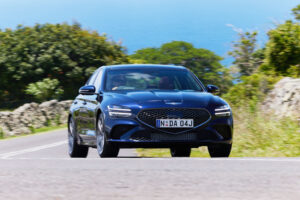
1920 Isotta Fraschini Type 8
Italy’s greatest luxury car, the Isotta-Fraschini Type 8, will be remembered not so
much for its splendid construction but for the glamour surrounding the people who
were lucky enough to own a model. The list of owners included Rudolph Valentino,
William Randolph Hearst and Jack Dempsey; as well as the Aga Khan, Benito
Mussolini and the Pope!
It was not that Isotta lacked anything technically: the Type 8 was the first production
car to be powered by that magnificent creation of the 1920s, the straight-eight
engine, after the marque had pioneered brakes on all four wheels. But the price –
four times that of any comparable luxury car short of a Rolls-Royce or Hispano-Suiza
– guaranteed an exclusive clientele.
Isotta’s ancestry was, of course, immaculate in the Italian tradition. It was a family
firm started in Milan by lawyer Cesare Isotta and technicians Vincenzo, Antonio and
Oreste Fraschini. Significantly, however, all technical direction was left to an
outsider, Giustino Cattaneo, who was to become renowned as one of the most
brilliant engineers in Italy.
Cattaneo’s early Isottas had a definite bias towards competition as a means of
proving their reliability, and as such carried advanced features like overhead valves
and camshaft. More than 50 different models were marketed between 1900 and
1914, with especially strong sales in America. At one point, in 1906, Isotta-Fraschini
was second only to Fiat as Italy’s largest car producer. But by the time they
pioneered four-wheel brakes in 1910, they were concentrating on costly high-
performance machines which offered a higher profit margin on each car sold.
Although these cars were primarily of sound and robust design, it was their engines
which distinguished them. With few exceptions, they were very large and powerful,
so it was hardly surprising that Isotta-Fraschini became one of Italy’s main suppliers
of aviation and marine engines.
Such was the success of their war effort that Isotta-Fraschini decided to concentrate
on one model after the war – the big, heavy, and very profitable Type 8. This model
remained in production with its 6.00-litre, straight eight-cylinder engine from 1919 to
1924. Many of the lessons learned in the air were featured in the engine, notably the
use of an aluminium crankcase and light alloy pistons.
This long-stroke engine produced such high torque that, despite two tons or more of
solid steel chassis and bodywork, first gear was needed only when starting on a hill.
The vacuum-boosted brakes were fantastic, with a mechanical linkage providing
identical pressures on opposite wheels. The suspension reflected equal attention to
detail, spring rates being meticulously matched to the weight of each complete car.
Production of all Type 8 models amounted to around 1350 with at least half of them
exported to the United States. As a result, when Wall Street crashed, so did Isotta’s
car-making prospects as they resolutely stuck to very extravagant models. At one
time it looked as though a merger with Ford might save them, but any such idea was
killed by an Italian government dependent on Isotta’s efforts with aero engines.
With no demand for such expensive luxury cars, only a few Type 8Cs were produced
before Isotta-Fraschini was bought out in 1932 by Count Caproni di Taliedo to supply
his aircraft business. Cattaneo resigned the following year and after that only aero
engines and trucks were produced.
In an effort to recreate the luxury car market, a new V8-engined Type 8C, called the
Monterosa, was produced as a prototype in 1947. But the world was not yet ready
again for such a fabulously expensive concept and Isotta had to be content with
producing engines for ships, trains, planes and anything other than very costly cars.










